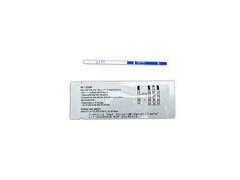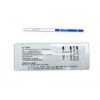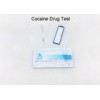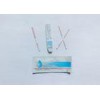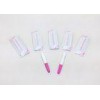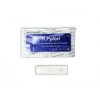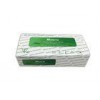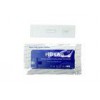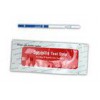High Accuracy One Step TP (Treponema Pallidum) Rapid Diagnostic test strip. blood test
Product Name:
Syphilis Rapid Diagnostic test strip
Intended Use:
The Syphilis Rapid Test Device (Whole Blood/Serum/Plasma) is a rapid chromatographic immunoassay for the qualitative detection of antibodies (IgG and IgM) to Treponema Pallidum (TP) in whole blood, serum or plasma to aid in the diagnosis of Syphilis.
Test Principle:
The Syphilis Rapid Test Device (Whole Blood/Serum/Plasma) is a qualitative membrane based immunoassay for the detection of TP antibodies (IgG and IgM) in whole blood, serum or plasma. In this test procedure, recombinant Syphilis antigen is immobilized in the test line region of the test. After specimen is added to the specimen well of the device, it reacts with Syphilis antigen coated particles in the test. This mixture migrates chromatographically along the length of the test and interacts with the immobilized Syphilis antigen. The double antigen test format can detect both IgG and IgM in specimens. If the specimen contains TP antibodies, a colored line will appear in the test line region, indicating a positive result. If the specimen does not contain TP antibodies, a colored line will not appear in this region, indicating a negative result. To serve as a procedural control, a colored line will always appear in the control line region, indicating that proper volume of specimen has been added and membrane wicking has occurred.
TEST PROCEDURE
1. Bring the pouched test device to room temperature(15-30) prior to testing. Do not open pouch until ready to perform the assay.
2. Remove the test device from the sealed pouch. Lay it on a flat, clean and dry surface.
3. Use the pipette to draw and slowly add 1 dro of whole blood/serum/plasma to the sample well.
4. Hold the buffer vertically and add 1 dro to the sample well. /If using a pipette, change a new one to avoid cross-contamination. Draw and transfer 2 drops of buffer to the sample well.
5. Interpret test results within 10-15 minutes. Do not interpret after 20 minutes.
Caution: The above interpreting time is based on room temperature range of 15-30. If your room temperature is significantly lower than 15, then the interpreting time should be properly increased to 30 minutes.
INTERPRETATION OF RESULTS
POSITIVE:* Two lines appear. One colored line should be in the control line region (C) and another apparent colored line should be in the test line region (T).
*NOTE: The intensity of the color in the test line region (T) will vary depending on the concentration of TP antibodies present in the specimen. Therefore, any shade of color in the test line region (T) should be considered positive.
NEGATIVE: One colored line appears in the control line region (C). No line appears in the test line region (T).
INVALID: Control line fails to appear. Insufficient specimen volume or incorrect procedural techniques are the most likely reasons for control line failure. Review the procedure and repeat the test with a new test. If the problem persists, discontinue using the test kit immediately and contact your local distributor.

PERFORMANCE CHARACTERS:
Clinical Sensitivity, Specificity and Accuracy
The Syphilis Rapid Test Device (Whole Blood/Serum/Plasma) has correctly identified specimens of a seroconversion panel and has been compared to a leading commercial TPHA Syphilis test using clinical specimens. The results show that the relative sensitivity of The Syphilis Rapid Test Device (Whole Blood/Serum/Plasma) is 99.5% and the relative specificity is 99.3%.
Syphilis Rapid Test Device vs. TPHA
| Method | TPHA | Total Results | ||
| Syphilis Rapid Test Device | Results | Positive | Negative | |
| Positive | 394 | 4 | 398 | |
| Negative | 2 | 540 | 542 | |
| Total Results | 396 | 544 |
940
|
|
Relative sensitivity: 99.5% (98.2%-99.9%)*
Relative specificity: 99.3% (98.1%-99.8%)*
Accuracy: 99.4% (98.6%-99.8%)* * 95% Confidence Intervals
Precision
NOTE: Insufficient specimen volume or incorrect procedural techniques are the most likely reasons for the control line failure. Review the procedure and repeat the test with a new device. If problem persists, please contact your local distributor.

